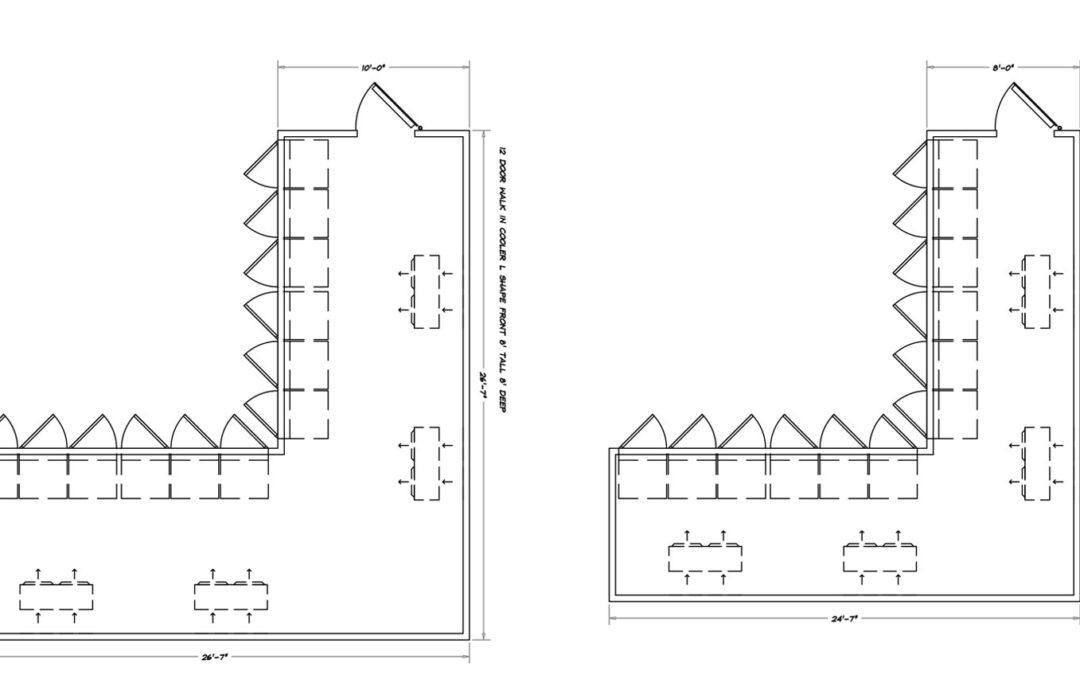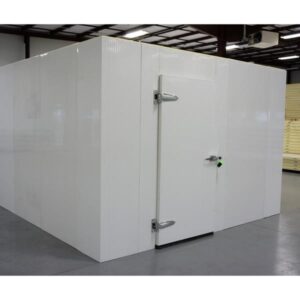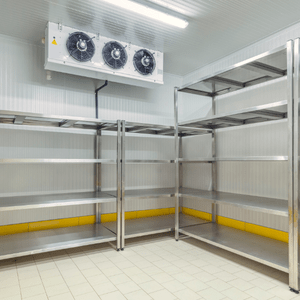Walk-in coolers are indispensable for restaurants, food service providers, and businesses in the hospitality industry that rely on stable, controlled refrigeration to preserve inventory and maintain food safety. However, to ensure the longevity and efficiency of these units, regular maintenance practices are essential. Proper care not only averts costly breakdowns but also ensures energy efficiency and compliance with health and safety standards.
This guide outlines the fundamental maintenance tasks required for a walk-in cooler, emphasizing best practices that owners and maintenance professionals should adopt to keep these vital systems operating seamlessly.
Why is Walk-In Cooler Maintenance Important?
Walk-in coolers are complex machines that operate continuously to provide a specific temperature-controlled environment. Over time, wear and tear can impair their performance, leading to increased energy consumption, subpar cooling efficiency, and potential health code violations.
Here are key reasons why regular maintenance is non-negotiable for walk-in coolers:
- Energy Efficiency: A well-maintained unit consumes less energy, reducing operational costs without compromising performance.
- Preventing Breakdowns: Timely care detects minor issues before they escalate into costly repairs or full-blown malfunctions.
- Compliance with Regulations: Health inspections can result in penalties for improper storage temperatures. A maintained unit ensures consistent, legally compliant refrigeration.
- Longevity of Equipment: Prolonging the lifespan of a walk-in cooler saves significant replacement costs in the long term.
Key Maintenance Tasks for Walk-In Coolers
1. Clean the Evaporator and Condenser Coils
The evaporator and condenser coils are integral to a walk-in cooler’s cooling process. Dust, dirt, and debris can accumulate on these components over time, which hinders heat exchange and decreases efficiency.
Why This Matters:
- Dirty coils force the compressor to work harder, leading to higher energy costs and accelerated wear-and-tear.
- Ineffective cooling can result in unstable temperatures, risking food spoilage.
How to Maintain:
- Clean the coils at least once every six months. For high-use environments, more frequent cleaning (quarterly) may be necessary.
- Use a soft brush or vacuum cleaner with a brush attachment to gently remove debris.
- For deeper cleaning, consider using a specialized coil cleaner approved by your manufacturer.
2. Inspect Door Seals and Gaskets
The gaskets and seals around the walk-in cooler door ensure that cold air stays inside the unit, maintaining the internal environment at a stable temperature. Damaged seals create gaps, allowing warm air to infiltrate and causing the refrigeration system to overcompensate.
Why This Matters:
- Gaps in door seals reduce cooling efficiency, increase energy usage, and contribute to frost buildup.
- Prolonged exposure to fluctuating temperatures can compromise product quality and safety.
How to Maintain:
- Regularly check for cracks, tears, or other forms of damage in the seals.
- Clean the gaskets every month with warm, soapy water to prevent mold and debris buildup.
- Replace damaged sealing components promptly to maintain a tight barrier.
3. Monitor Refrigerant Levels
Refrigerant is the life force of any cooling system, enabling heat absorption and maintaining the desired temperature within the unit. Low refrigerant levels can disrupt the cooling cycle altogether.
Why This Matters:
- Insufficient refrigerant causes the system to overwork, leading to increased energy consumption and potential compressor damage.
- Food safety may be jeopardized if the cooler fails to maintain consistent temperatures.
How to Maintain:
- Schedule regular professional inspections to ensure refrigerant levels are within the manufacturer’s recommended parameters.
- Address refrigerant leaks immediately—they not only impair performance but may also lead to regulatory penalties due to environmental concerns.
4. Calibrate Thermostats and Temperature Controls
Maintaining precise control over the cooler’s internal temperature is fundamental to ensuring safe food storage. However, thermostat calibration can drift over time, leading to inaccurate readings or inconsistent cooling.
Why This Matters:
- Incorrect temperature readings can result in improper storage conditions, threatening food safety and violating health regulations.
- Overly cold settings waste energy, while overly warm settings risk spoilage.
How to Maintain:
- Check and recalibrate the thermostat at least every six months.
- Use a secondary thermometer to cross-check the displayed temperature with actual internal conditions.
- Adjust temperature settings specific to the type of inventory being stored (e.g., fresh produce, dairy products, or frozen goods).
5. Remove Ice and Condensate Buildup
Walk-in coolers are prone to condensation, and excessive ice buildup can signal underlying operational issues, such as unsealed doors or poor airflow.
Why This Matters:
- Ice buildup reduces airflow within the unit, compromising overall efficiency.
- Excess moisture may lead to mold growth and create slipping hazards near the cooler.
How to Maintain:
- Regularly inspect evaporator trays and drain lines for blockages or excessive water accumulation.
- Remove excess ice using a safe defrosting method. Avoid mechanical tools that could damage internal components.
- Investigate potential causes of ice accumulation, such as gasket damage or inconsistent temperature settings.
6. Ensure Proper Airflow and Organization
Overcrowding a walk-in cooler not only compromises airflow but also interferes with uniform temperature distribution.
Why This Matters:
- Restricted airflow causes cold and hot spots, increasing the risk of spoilage for some products while overcooling others.
- Inefficient cooling forces the unit to consume more energy to maintain the desired temperature.
How to Maintain:
- Avoid blocking vents with inventory—leave adequate space around the evaporator fan to maintain efficient airflow.
- Organize products systematically, grouping perishable items closer to cold spots and less sensitive products near the door.
- Regularly audit and discard expired or unnecessary items to optimize usable space.
Professional Support for Walk-In Cooler Maintenance
While routine maintenance tasks can be handled in-house by staff or managers, professional inspections are an essential complement to your efforts. Certified maintenance professionals have the expertise, tools, and knowledge to:
- Diagnose and address complex issues that may require technical repairs.
- Conduct preventative assessments to mitigate potential risks.
- Offer tailored guidance on adjustments specific to your cooler model and business requirements.
Many service providers offer annual maintenance plans to ensure your walk-in cooler stays in optimal condition year-round.
Best Practices to Extend Walk-In Cooler Lifespan
- Train your staff on basic cooler care, such as spotting warning signs of malfunction (e.g., unusual noises, erratic temperature fluctuations).
- Adhere to manufacturer-recommended maintenance schedules.
- Keep records of service history and repairs for accurate tracking.
Optimize Your Walk-In Cooler Performance Today
Walk-in coolers are an invaluable asset to restaurant owners, food service providers, and maintenance professionals. By implementing regular maintenance practices, business owners can ensure their units operate efficiently, reduce energy costs, and uphold food safety standards.
If you’re navigating how to better manage or maintain your walk-in cooler, expert guidance is readily available. Contact our team for a professional consultation and keep your cooler in peak operational condition.



